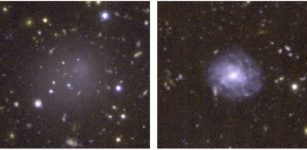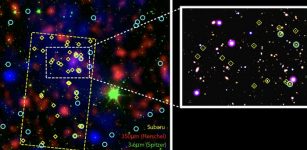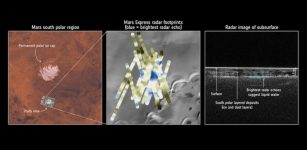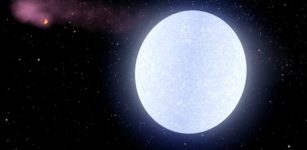Get Lost In This Jaw-Dropping View Of The Eagle Nebula
MessageToEagle.com – It’s easy to get lost in this jaw-dropping snapshot of the Eagle Nebula, which offers a high-resolution view of an incredible space landscape.
The Eagle Nebula is a massive collection of gas and dust, which serves as fertile soil for the birth of new stars. The blue, lagoonlike region at the center of the image contains the iconic, fingerlike structures known as the Pillars of Creation. The blue, green and red indicate the presence of different gasses.
The image was created by a collaboration of four astro photographers, and is composed of 177 individual frames, with a total integration time of 32 hours. The group members are Terry Hancock of Michigan, Gordon Wright from Scotland, Colin Cooper, Spain; and Kim Quick, Florida. The full-size image is almost too much to take in all at once, so viewers are encouraged to zoom in and get lost in the details of this incredible snapshot.
The Pillars of Creation can be seen in this highly detailed view of the Eagle Nebula.
Credit: Terry Hancock/www.downunderobservatory.com, Gordon Wright, Colin Cooper, Kim Quick. Click on image to view full size
The Eagle Nebula is about 7,000 light-years from Earth, and is approximately 70 light-years tall and 55 light-years wide. (One light-year is the distance light travels in a year, about 6 trillion miles, or 10 trillion kilometers). The blue in the image shows the presence of ionized oxygen (meaning oxygen atoms that have lost electrons), green shows the presence of hydrogen, and red, ionized sulfur.
The Eagle Nebula and the Star Queen nebula can be seen in this annotated view.
Credit: Terry Hancock/www.downunderobservatory.com, Gordon Wright, Colin Cooper, Kim Quick. Click on image to view full size
The Pillars of Creation were first captured in a stunning image by the Hubble Space Telescope in 1995 and again, in higher resolution, in 2014. The Pillars were likely an active bed of star formation at one time, but scientists have recently observed very low levels of X-ray light coming from the region, suggesting that star formation has slowed.
MessageToEagle.com via Space.com




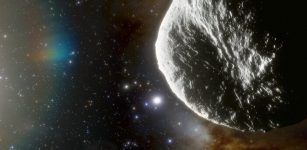
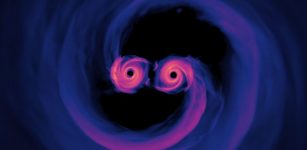

![Scientific visualization of a numerical relativity simulation that describes the collision of two black holes consistent with the binary black hole merger GW170814. The simulation was done on the Theta supercomputer using the open source, numerical relativity, community software Einstein Toolkit (https://einsteintoolkit.org/). Credit: Argonne Leadership Computing Facility, Visualization and Data Analytics Group [Janet Knowles, Joseph Insley, Victor Mateevitsi, Silvio Rizzi].)](https://www.messagetoeagle.com/wp-content/uploads/2021/07/artifintelgrvitwaves01-307x150.jpg)
